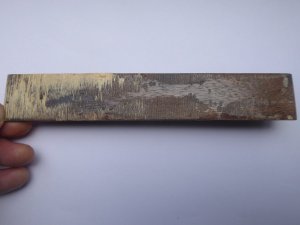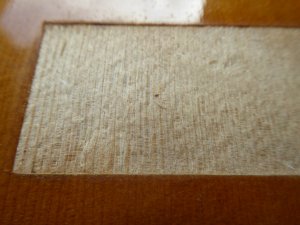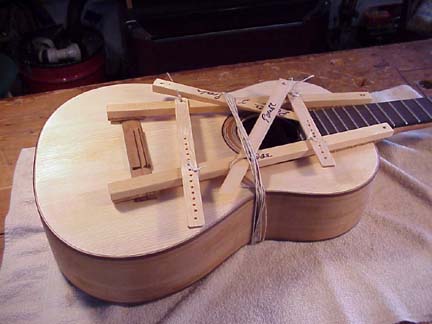xy mosian
Established Member
Hi all,
A friend has a Classical guitar roughly 50 years old, could be more. Possibly because of wrong string choice the bridge has come off. I have been asked if I can reattach it.
Photos are included


Clearly the original manufacturer did not do a good job of glueing the bridge in the first place.
Now my plan is dependant on the adhesive used. If it is animal based then I see few problems, apart from clamping which i will do with a U shaped piece of thick ply and one or two wedges.
If the adhesive is PVA, then that gives different problem. I would start by cleaning the bridge and then the soundboard.
Herein lies my problem, and questions.
If I scrape the soundboard, how much glue will have soaked into the wood, and will I be able to detect when the wood is clean?
Once I get the bridge, and soundboard, clean of pva will that be clean enough to use animal glue?
Thanks in advance,
Geoff
A friend has a Classical guitar roughly 50 years old, could be more. Possibly because of wrong string choice the bridge has come off. I have been asked if I can reattach it.
Photos are included


Clearly the original manufacturer did not do a good job of glueing the bridge in the first place.
Now my plan is dependant on the adhesive used. If it is animal based then I see few problems, apart from clamping which i will do with a U shaped piece of thick ply and one or two wedges.
If the adhesive is PVA, then that gives different problem. I would start by cleaning the bridge and then the soundboard.
Herein lies my problem, and questions.
If I scrape the soundboard, how much glue will have soaked into the wood, and will I be able to detect when the wood is clean?
Once I get the bridge, and soundboard, clean of pva will that be clean enough to use animal glue?
Thanks in advance,
Geoff


































